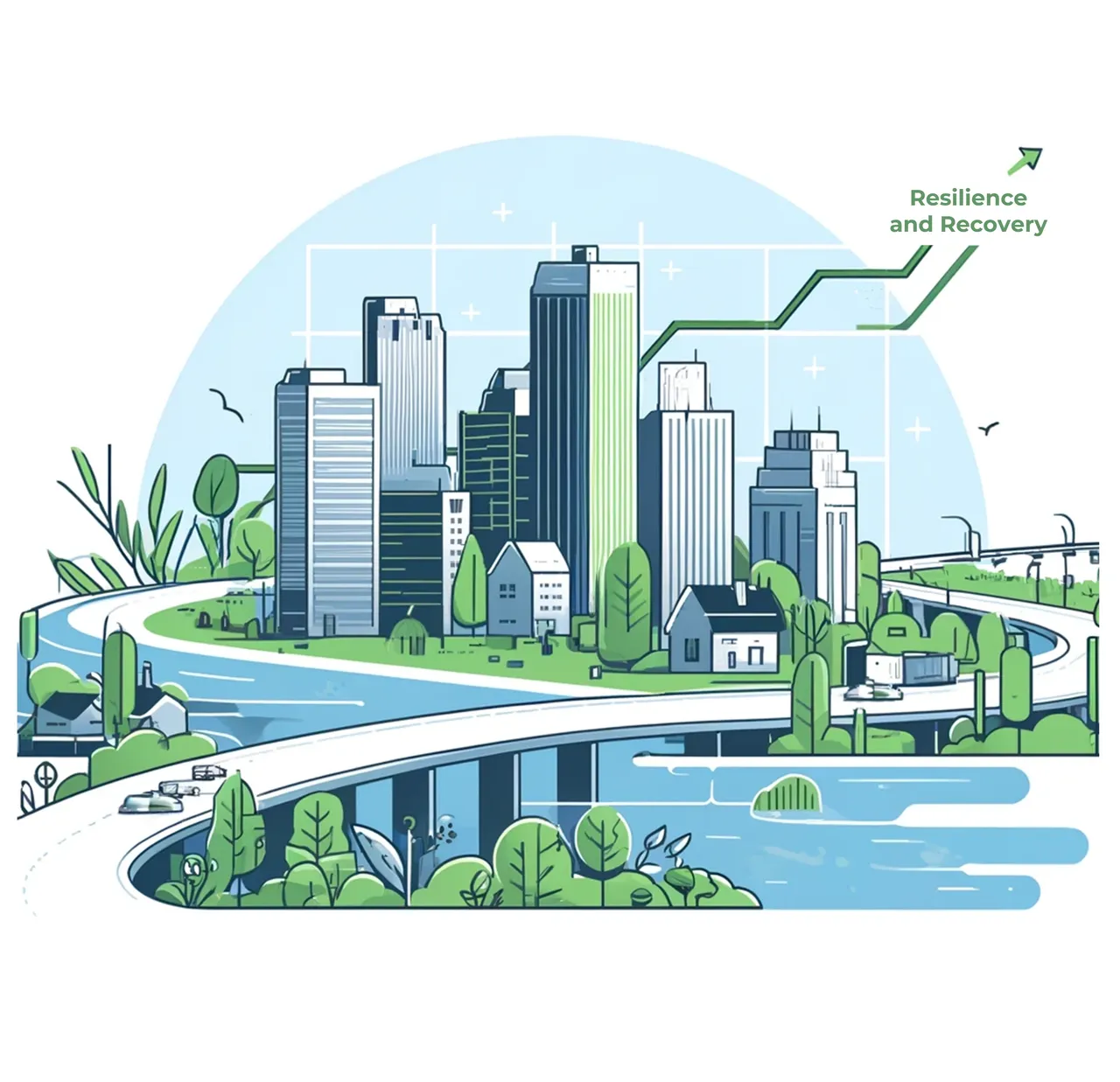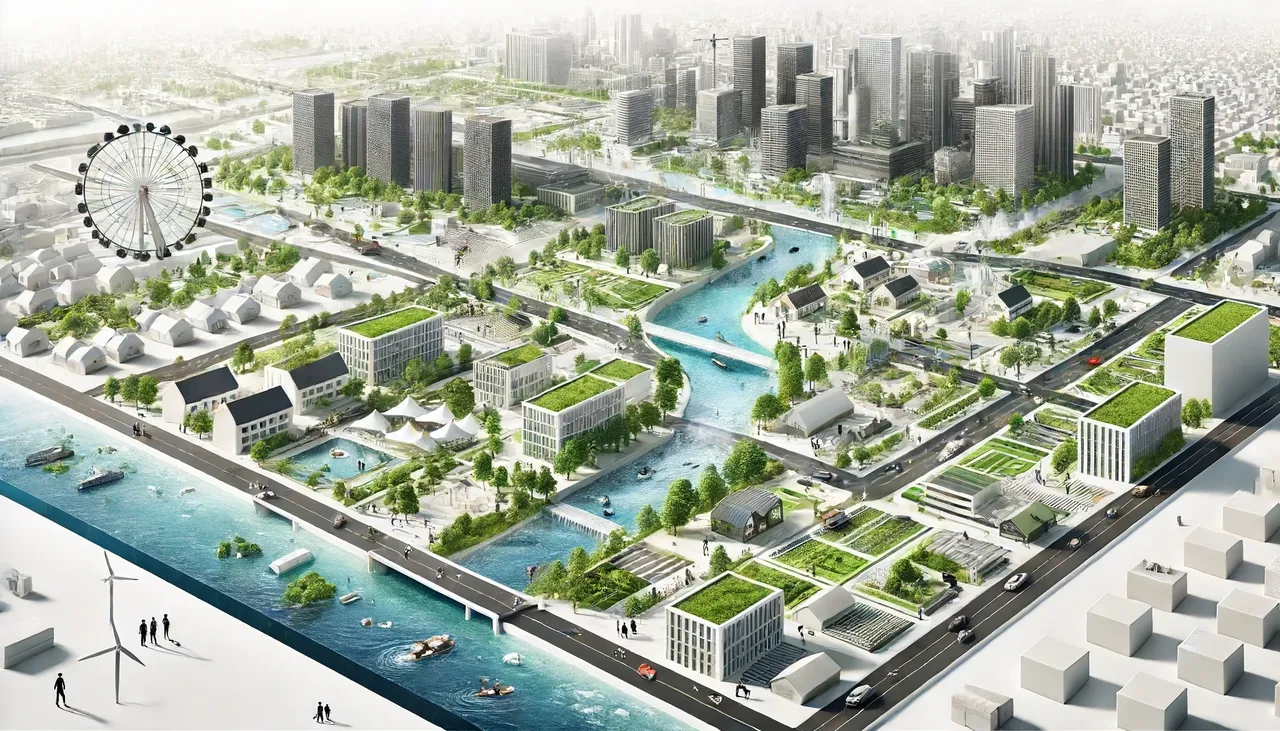· Blog · 3 min read
Understanding Resilience - More Than Just Bouncing Back
An illustration of a thriving city, symbolizing resilience through modern infrastructure, greenery, and a resilience curve indicating recovery and growth

In today’s world, resilience is a term that’s frequently discussed. But what does it truly mean? At its core, resilience refers to the capacity of a system—be it an individual, a community, or an ecosystem—to absorb disturbance and still retain its basic function and structure. This concept has increasingly become a focal point in discussions about global and planetary conditions.
Resilience isn’t a new idea, but its prominence has surged in recent years. The term was even crowned “word of the year” by several commentators in 2012. Its application spans a remarkable variety of contexts and scales, from personal character to global ecosystems.
Two Views on Resilience
There are generally two orientations toward resilience:
The Optimistic View
This perspective sees resilience as an admirable and desirable quality. It emphasizes agency—the capacity of individuals or groups to creatively exert power and adapt to challenges. This view is prevalent in self-help publications aimed at strengthening individual resilience, community readiness manuals for coping with disasters, and scientific studies on enhancing the resilience of ecosystems.
- Example: In personal development, self-help books and workshops often focus on building individual resilience. These resources teach people how to bounce back from personal setbacks, such as job loss or illness, by fostering a positive mindset, emotional strength, and problem-solving skills.
- Example: In ecological studies, scientists examine how ecosystems recover from disturbances like wildfires or hurricanes. They explore ways to enhance the natural resilience of these systems through conservation efforts and sustainable practices.
The Skeptical View
This viewpoint criticizes resilience for placing the burden of coping with large-scale problems onto individuals or small communities. These problems, often structural or systemic, require larger collective actions. The skeptical approach argues that celebrating resilience can sometimes obscure the need for significant changes at higher levels of policy and governance.
- Example: Critics of the resilience narrative in urban development argue that promoting individual or community resilience can shift focus away from the need for comprehensive urban planning and infrastructure improvements. Instead of addressing root causes like poor urban design or inadequate disaster preparedness, the responsibility is placed on residents to cope with the consequences.
- Example: In the context of climate change, some argue that emphasizing community resilience can downplay the need for global policy changes to reduce greenhouse gas emissions. The burden of adaptation falls on vulnerable communities while systemic solutions are overlooked.
A Balanced Approach
In our work, we adopt a reworked understanding of resilience that combines the strengths of both orientations. We believe that while resilience is a vital quality, it must be understood in a broader context that acknowledges the interconnectedness of individual actions and larger structural forces.
For instance, enhancing individual or community resilience should not overshadow the need to address the root causes of crises, such as economic policies or environmental degradation. It’s crucial to recognize the transformative potential of resilience, where collective and creative actions not only help communities survive but also challenge the larger forces driving crises.
- Example: In the aftermath of a natural disaster, such as Hurricane Sandy in 2012, New York City implemented a comprehensive resilience strategy. This included not only rebuilding infrastructure but also addressing systemic vulnerabilities through improved zoning laws, investment in green infrastructure, and community engagement. This holistic approach demonstrates how resilience can be integrated with broader policy initiatives to create lasting change.
Conclusion
Resilience is more than just bouncing back from adversity. It’s about maintaining core functions in the face of challenges and, importantly, about evolving and transforming in ways that address the underlying causes of those challenges. By embracing a holistic view of resilience, we can better equip ourselves to navigate the complexities of our interconnected world.


